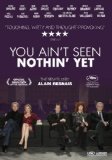| Reviews & Columns |
|
Reviews DVD TV on DVD Blu-ray 4K UHD International DVDs In Theaters Reviews by Studio Video Games Features Collector Series DVDs Easter Egg Database Interviews DVD Talk Radio Feature Articles Columns Anime Talk DVD Savant Horror DVDs The M.O.D. Squad Art House HD Talk Silent DVD
|
DVD Talk Forum |
|
|
| Resources |
|
DVD Price Search Customer Service #'s RCE Info Links |
|
Columns
|
|
|
You Ain't Seen Nothin' Yet
The Movie:
First off, if you clicked this link hoping someone had finally made the definitive Bachman-Turner-Overdrive documentary, I'm sorry to disappoint you, but this is not it.
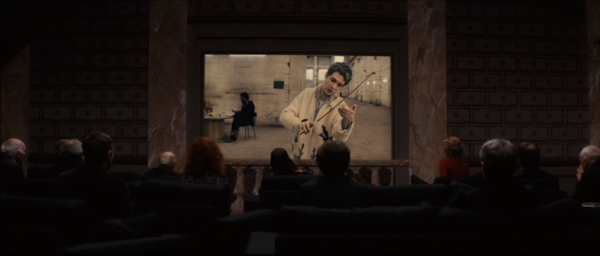
Instead, You Ain't Seen Nothin' Yet is the newest film from nonagenarian French film master Alain Resnais (Hiroshima Mon Amour, Last Year at Marienbad, Mon Oncle d'Amerique, Wild Grass, and on and on). Resnais and his writing collaborator Laurent Herbiet adapt two plays by Jean Anouilh: the framework created by the play Dear Antoine, or The Love That Failed allows them to do a fuller filmed theatrical production of Eurydice within that reality. It seems vaguely reminiscent of Louis Malle's work with Andre Gregory and Wallace Shawn, especially Vanya on 42nd Street, except that Resnais is not satisfied just to stage Anouilh on bare sets with the actors in street clothes. He seems intent to bring the magic of cinema to his theatrical conceits, playing with his varying levels of reality, creating another masterpiece in a career that has seen more than a few.
The opening is something out of an old-dark-house murder mystery. A baker's dozen of acclaimed French actors, all ostensibly playing themselves, are summoned to the reading of the will of the recently deceased (fictional) playwright Antoine d'Anthac (Denis Podalydès). A butler is there to greet the actors and play for them a video wherein the late Antoine explains that a new company wants to put on a production of his play Eurydice. The company has sent him a video of them rehearsing it, but he wants these assembled actors who have performed Eurydice to determine if this new version is worthy.
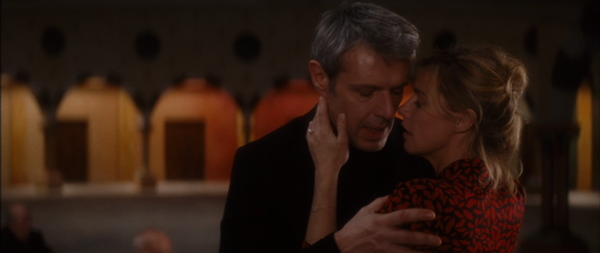
This momentarily seems like a set-up for a kind of highbrow Mystery Science Theater 3000 episode, where these experienced actors watch the reinterpreted Anouilh play and take down the newbies. But that is not where Resnais is going at all. The video begins playing, and the older actors begin grinning; they are charmed by the new approach and are washed in the wave of nostalgia for this piece that had been part of their creative life. New Wave staple Michel Piccoli begins reciting his lines as Orpheus' father, first echoing the video then talking over it. Pierre Arditi begins saying his lines as Orpheus in reply, and there becomes an interplay between the two men and the video performance.
Adding another wrinkle to this weird little experiment, Resnais has decided that Antoine would invite two actors who had played Orpheus and two actresses who had played Eurydice, in addition to the couple shown on the video. Thus, in the early going, there can be certain lines where you hear three variations from the different sets of actors back-to-back-to-back. These moments touch on the impermanent, fluid nature of theater, where the same role can be revived by a million different actors, all bringing their own unique emotional colorings to line readings and reactions.
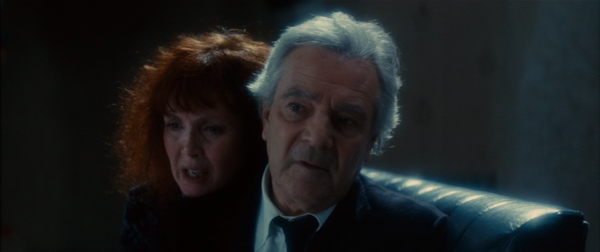
Fortunately, the movie does not proceed as some dry, theoretical exercise. Resnais is too playful for that. The walls of the viewing room melt away (thanks to computer effects), replaced by various semi-dreamy settings: a train station luncheonette, a motel room. So, while the acting is grounded in the theatrical piece, the cinematic world is ever-shifting. As Resnais switches between sets of actors, so too do the settings change, so that one couple's motel room is not the same as the others'. In one split screen, two Orpheuses (Orphei?) are shown simultaneously opening their motel room doors and the room numbers are different, pointing out the differences in the realities or making it almost seem as if these two rooms with two couples acting out the same drama might exist in the same fictional reality.
Even while juggling all these concurrent realities, the movie is not frantic or overworked. The shifts between different performers and settings are executed with a delicate precision that keeps the film completely engrossing. Also, it becomes apparent that Resnais is fondest of the oldest of the three lead pairings, Pierre Arditi and Sabine Azéma. He features them most frequently in scenes, even though they are the least accurate age-wise for the role of the young lovers. This is a wise choice, because instead of chronological accuracy, these actors bring a unique emotional baggage to their performance that is the beating heart at the core of You Ain't Seen Nothin' Yet.
The conclusion of the film is a bit of a head-scratcher, but maybe it is an allusion to the plot of Dear Antoine, with which I am unfamiliar. Notwithstanding that odd coda, You Ain't Seen Nothin' Yet is one of the most invigorating movies about performance and the creation of art, and it is easily one of the best movies released this year.
The DVD
Video & Audio:
It is a shame that Kino is not releasing a Blu-ray version of the film, but I must say this is one of the finest standard-def presentations I've enjoyed. The 2.35:1 anamorphic image does not seem to bear any DVD compression flaws. The lighting scheme is mostly low-key, high-contrast, and very dramatic, so it is excellent that there are no clipped highlights or crushed blacks. Cinematographer Eric Gautier gives the majority of the film a kind of honey-colored tone, which compliments the warm nostalgic feel, before shifting to cooler hues in the late stretch of the play. Even the video footage that the actors watch replicates well.
The audio comes in a French 5.1 or 2.0 mixes, with only English subtitles. The 5.1 mix is astonishing. While the film is dialogue-heavy up front, the atmosphere created in the rear channels is enveloping. The voices have been recorded as though the actors were standing right beside you, with the sound effects and the synth-y score by The X Files' Mark Snow perfectly underscoring the emotion and giving you the sense of the space where the performance is happening (essentially a cavernous soundstage). Really beautifully captured, and crying out for a high-def presentation.
Special Features:
Just three trailers: one for this film and two coming attractions.
Final Thoughts:
This is an astonishing movie that hardcore arthouse film fans are going to want to own. The DVD presentation is top-notch. It's a shame there are no meaningful bonus features, and it would sure be better to have this in high-def. With those two changes, this would have been a Collector Series entry for sure, but instead it comes Highly Recommended.
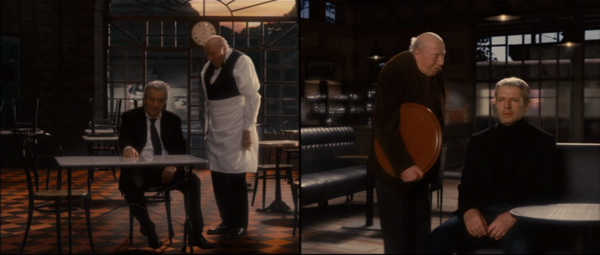
Justin Remer is a frequent wearer of beards. His new album of experimental ambient music, Joyce, is available on Bandcamp, Spotify, Apple, and wherever else fine music is enjoyed. He directed a folk-rock documentary called Making Lovers & Dollars, which is now streaming. He also can found be found online reading short stories and rambling about pop music.
|
| Popular Reviews |
| Sponsored Links |
|
|
| Sponsored Links |
|
|
| Release List | Reviews | Shop | Newsletter | Forum | DVD Giveaways | Blu-Ray | Advertise |
|
Copyright 2024 DVDTalk.com All Rights Reserved. Legal Info, Privacy Policy, Terms of Use,
Manage Preferences,
Your Privacy Choices | |||||||









